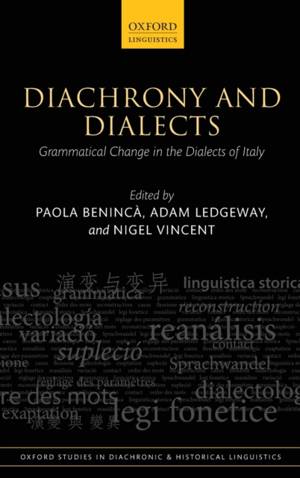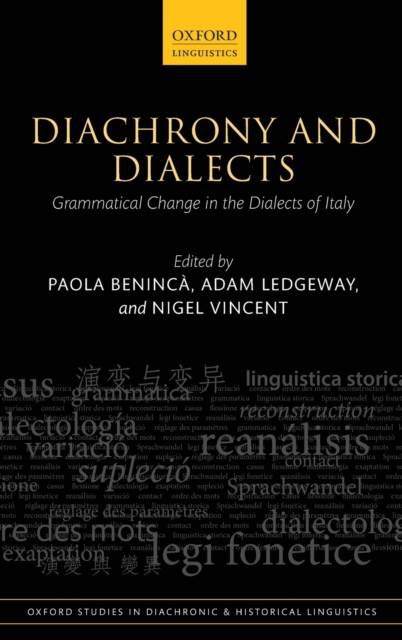
- Retrait gratuit dans votre magasin Club
- 7.000.000 titres dans notre catalogue
- Payer en toute sécurité
- Toujours un magasin près de chez vous
- Retrait gratuit dans votre magasin Club
- 7.000.0000 titres dans notre catalogue
- Payer en toute sécurité
- Toujours un magasin près de chez vous
Diachrony and Dialects
Grammatical Change in the Dialects of Italy
290,45 €
+ 580 points
Description
This book examines diachronic change and diversity in the morphosyntax of Romance varieties spoken in Italy. These varieties offer an especially fertile terrain for research into language change, because of both the richness of dialectal variation and the length of the period of textual attestation. While attention in the past has been focussed on the variation found in phonology, morphology, and vocabulary, this volume examines variation in morphosyntactic structures, covering a range of topics designed to exploit and explore the interaction of the geographical and historical dimensions of change. The opening chapter sets the scene for specialist and non-specialist readers alike, and establishes the conceptual and empirical background. There follow a series of case studies investigating the morphosyntax of verbal and (pro)nominal constructions and the organization of the clause. Data are drawn from the full range of Romance dialects spoken within the borders of modern Italy, ranging from Sicily and Sardinia through to Piedmont and Friuli. Some of the studies narrow the focus to a particular construction within a particular dialect; others broaden out to compare different patterns of evolution within different dialects. There is also diversity in the theoretical frameworks adopted by the various contributors. The book aims to take stock of both the current state of the field and the fruits of recent research, and to set out new results and new questions to help move forward the frontiers of that research. It will be a valuable resource not only for those specializing in the study of Italo-Romance varieties, but also for other Romanists and for those interested in exploring and understanding the mechanisms of morphosyntactic change more generally.
Spécifications
Parties prenantes
- Editeur:
Contenu
- Nombre de pages :
- 376
- Langue:
- Anglais
- Collection :
Caractéristiques
- EAN:
- 9780198701781
- Date de parution :
- 29-07-14
- Format:
- Livre relié
- Format numérique:
- Genaaid
- Dimensions :
- 160 mm x 236 mm
- Poids :
- 721 g

Les avis
Nous publions uniquement les avis qui respectent les conditions requises. Consultez nos conditions pour les avis.





